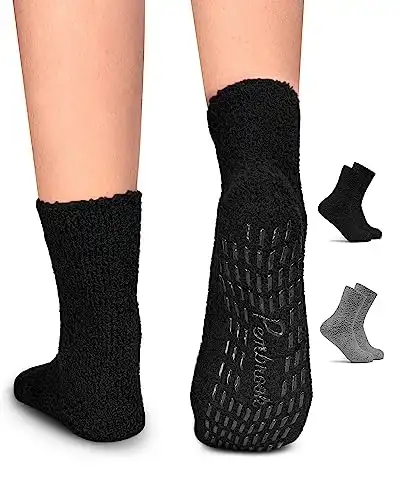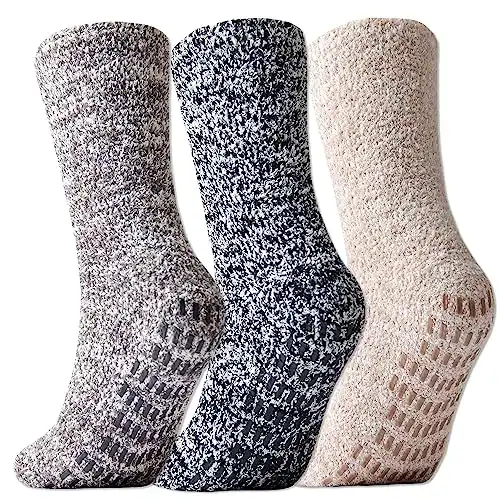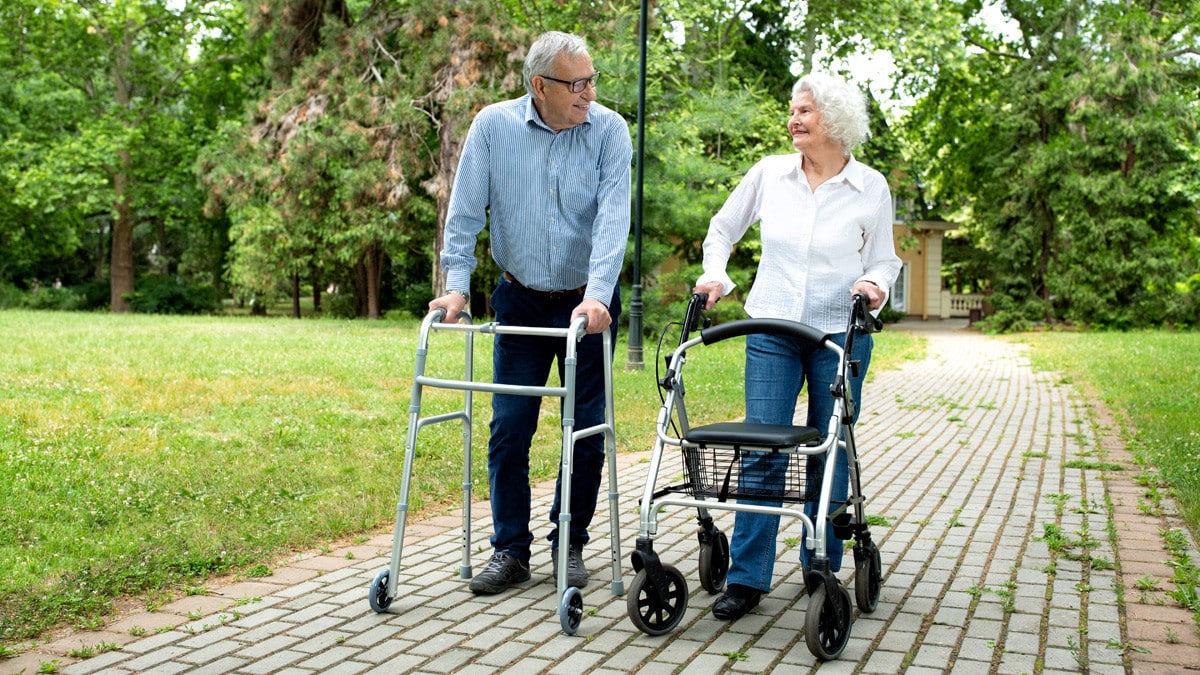Why Foot Health Is Important
Many things can go wrong with your feet, but this is particularly true in aging adults who are often afflicted by several ailments at a time. Prevention is the fundamental weapon to deter problems and the basic pillars for prevention are hygiene, disinfection of footwear, daily change of and , and regular visits to a podiatrist.
Proper hygiene consists of washing your tootsies daily, if possible, at night, to remove all the dirt accumulated during the day. You must use lukewarm water, and neutral soap and dry your feet thoroughly, especially between the toes. Finish off with a moisturizing cream.
The footwear you wear depends on the activities you do throughout the day. Your ideal must be wide enough to wiggle your toes and be made of breathable material. There should be about half an inch between the end of your longest toe and the front of the shoe, did you know it’s better to purchase your footwear in the afternoon? This is because your feet reach their swelling peak around that time. Thus, the well-fitting you try on at that time won’t hurt you at any other time of the day. As for , opt for garments made of or other natural fibers as synthetic fibers aren’t breathable. (This is the subject of today’s article so we’ll explore it further below.)
Furthermore, keep an eye out for any open wounds, be it irritation or an ulcer, and consult your doctor if your skin feels tender or if you’re in . You want to solve any problem you might have before it worsens. Again, have your feet checked periodically by a podiatrist. You must regularly visit this professional to know if you’ve been adopting bad posture when walking and find out how to reverse any damage. Also, have the doctor trim your nails if you’re diabetic, better safe than sorry.
As you can see, good podiatric health will keep you from adopting bad posture, especially if you’re already in as you move. Any person should take good care of their feet but this is particularly important as you become older. You want to remain active, right?
Top Benefits of
are a useful garment even though we don’t usually pay much attention to them. We keep them hidden under our or sneakers and even under our trouser legs in many cases. are also a versatile clothing accessory. Especially for those who do , Pilates, and ballet, but also for children and adults who just want to be comfortable with bare feet.
Anti- hospital have silicone dots or lines on the sole to prevent slipping. They’re a great alternative to slippers so you can walk, run and jump, but the socks are also great for those who have to stand for long periods. These garments are also great for keeping your feet warm when in contact with the cold floor and are travel-friendly, so you can easily stash them in your suitcase. You can also wear them inside your regular and keep your feet from shifting around. In addition, those made of absorbent material can help prevent the onset of .

Types of Anti-
The most common materials added to anti- are silicones and rubbers that can resist friction and heat. For instance, acrylonitrile butadiene styrene is a common thermoplastic polymer with a more complex treatment that provides greater rigidity and hardness. The anti- material keeps you from slipping when you rub your feet against a slippery floor material and thus, prevents falls.
Most of these have this anti- material on the area of the sole, especially the parts that rest directly on a surface. There are many kinds but the most common has small dots distributed throughout the sole. Others have geometric shapes and even patterns.
Anti- minimize falls and slips but they also cover your feet and provide some stability. There are many kinds so your final choice will depend on what you like and on the use you intend to give them. To select the best for you, consider how you’re going to use them and where.
Our Top Picks
You can find anti- for summer or winter, for exercise and sports, short and long, covered or uncovered toes, etc. Here’s a list of some anti- we liked that are currently on the market.
Rative Anti- Non-Skid with Grips
This is a pack of three pairs of 97 percent , 3 percent , and anti- nonskid with grips for adult men or women. You can select from various color combinations: black, beige, and pink; all black; all grey; red, white, and blue; black, beige, and grey, or black, grey, and pink. You can also choose from small, medium, large, and extra-large.
Rative also offers packs of six pairs of in all blue, all black, or all white and these are available in small, medium, large, extra-large, and XX-L. These are made of a blend of 97 percent terylene and 3 percent so they’re breathable, tough but soft, machine washable, and quick drying.
The feature for a secure fit and the tough, soft material has great ventilation and dries quickly. Furthermore, the high-quality knitted fabric doesn’t get torn or deform when machine washed. The have a layer of dot grips at the sole to provide on slick surfaces such as wood floors and tile and prevent falling or losing balance while walking or running.
These are perfect for the safer practice of and Pilates as they enhance balance during exercise. They’re also a great alternative to going barefoot around the house and preventing falls.
by RATIVE
Pembrook Fuzzy with Grippers
These are packs containing two, four, and six pairs of nonskid fuzzy unisex , one size fits all, and you can select from a two-, four-, or six-pack and from a variety of colors such as black, gray, navy blue, purple, pink.
These are the softest luxury hospital socks you’ll find on the market, according to the manufacturer. They’re made of soft, high-quality chenille — a blend of , , and . The proprietary tread design provides maximum traction on nearly any surface and thus, safety and security. Furthermore, the tread is color-matched to the sock for a subtle look that won’t scuff your floors.
These medical-grade are commonly used in hospitals, healthcare facilities, retirement homes, nursing homes, and homes. This is because the grips on the bottom help patients prevent falls and are warm. They fit men’s shoe sizes up to 11 and women’s shoe sizes up to 9.
by Pembrook
Unenow Unisex Non-
This is a pack of four pairs of available in all black as well as in the following color combinations: black, dark grey, blue, and light grey; black, dark grey, coffee, and dark green; two gray pairs and two black; black, light gray, army green, and navy; black, light grey, bean red, and light blue; peacock blue, wine red, purple, and coffee; purple grey, apricot, light orange, and pink. Furthermore, you can select from small, medium, and large.
These unisex feature non- flexible silicone dots on the bottom so they won’t crack regardless of how much you pull. They also improve balance and stability so that you have better control over your body movements and prevent injuries.
These are perfect for Pilates, , ballet, dance, barre, Bikram, martial arts, trampoline jumping, and fitness, and are particularly useful for pregnant women and aging people.
with Grippers for Men
This pack of contains three pairs and come in all-white, all black, all brown, all navy blue, all light grey, all tan, all dark grey, and in combinations of black, dark grey, and light grey; navy, brown, and tan; green, blue, and maroon. They’re available in small, medium, and large.
The material is a machine washable blend of 78 percent , 20 percent , and 2 percent . Also, the patented Chevron Pattern won’t fall off like most dotted patterns. These are great for aging people in hospitals or nursing homes but also for those who practice and pilates. The versatile helps keep your feet planted on slippery hardwood or tile floors.
by GripJoy
Jormatt Ultra Thick Fuzzy Non-Skid Unisex
This is a pack containing three pairs of available in combinations of black, grey, and navy; pink, grey, and navy, and all black. The are made of an optimum blend of and and are machine washable. You can wear them for hours on end without the slightest discomfort, according to the manufacturer.
by Jormatt
Preventing Falls and Infection in Aging Adults
Falls in hospitalized older adults are common, especially in those who have to stay there for longer periods. Hospital staff often provide non- in an attempt to reduce falls alongside other fall prevention strategies like patient education, clinician education, bed alarms, assistive devices, exercise and rehabilitation, medication reviews, fall policies and systems, and environmental adaptations.
Most people arrive at a hospital with inadequate footwear so these kinds of socks help guard against infection by encouraging people to walk more intently. Inadequate footwear is often the cause of falls and these, in turn, cause most hip fractures in seniors. However, there isn’t a consensus on whether non- are a good footwear alternative. Some say there are many benefits, while others insist that walking around barefoot offers similar resistance.
It might be so but going barefoot in a hospital setting isn’t a good idea as the risk of contracting or spreading infection increases because hospital floors are likely to be contaminated with pathogens.
Did you know that falls and slips are common among those over the age of 65? Indeed, about 36 million falls in this population are reported each year. About three million of them end up in the ER due to a fall injury as one out of every five falls leads to broken bones or head injuries.
Furthermore, women fall more often than men and are victims of about three-quarters of all hip fractures. Still, you can prevent most accidents so don’t think of them as an inevitable endgame. Discuss fall risks and prevention with your doctor and inform them if you’ve fallen recently or if you feel unsteady and are afraid you might fall.
Ask them to review any medications you might be taking and discuss side effects such as feeling dizzy or drowsy. You may not be aware of it but some substances can increase your risk of falling, even over-the-counter drugs and homemade natural remedies.
Do you get dizzy or lightheaded when you go from sitting to standing? Have you checked your eyes and updated your eyewear recently? Conditions like cataracts and glaucoma often limit your vision. In addition, have your feet checked and discuss proper footwear with your doctor. Also, you might think you can no longer be active but do your best to be as it’s the only way to preserve your mobility.
Furthermore, do strengthening exercises to improve your balance and get rid of any obstacles along your usual paths at home. You can also add grab bars and night lights around your house, especially in the bathroom and staircases.
Other Types of Healthy
Anyone can benefit from wearing certain kinds of healthy . There are athletic designed for active people as well as for those with problems like diabetes. Other styles of orthopedic are appropriate for hunting and some even have steel toes to protect your feet. The designs are so sophisticated you can wear them with dressy attire.
Most healthy are the first line of defense against stinky feet, blisters, corns, calluses, and even athlete’s . As you can see, there are for every activity. Industrial workers can wear those that protect their toes against the toe plates of work boots and office clerks can select dressy -wicking with integration for a more hugging fit.
Support are a great choice as preventative support or for varicosities below the knee. Thanks to the advances in knitting technology, there are many new styles of graduated available these days. You can get anything from dressy , casual patterned ones, and even knit with -wicking fibers.
can reduce the circumference of the limb and its superficial veins and the blood flows freely when these decrease in size. As you can imagine, they help prevent blood from pooling and thus, your chances of developing thrombus. therapy can also improve valve functioning by reducing the vein diameter and moving back the valve cusps (the pointed ends of the valves) to their proper overlapping position. can also strengthen varicosity and make it less visible and symptomatic.
Similarly, are important for people with diabetes and can aid in the prevention of diabetic wounds and other problems that could afflict diabetic people. Those with diabetic neuropathy must consult a doctor immediately. This is a condition that often leads to loss of sensation, and could be a sign of infection caused by undetected diabetic ulcers. These ulcers will lead to amputation if not treated promptly.
The way diabetic work is they protect your feet from external damage, minimize irritation, and promote . Their light not only has therapeutic benefits but reduces pressure points and offers . Most diabetic relieve pressure, have seamless designs, wick , are antibacterial, and there are extra-large sized ones for .
made from one hundred percent aren’t recommended for people with diabetes because the material lacks -wicking properties. Not only that, they wear out faster and don’t last as long. As if that wasn’t enough, the friction of the worn-out fabric against the skin of the feet will lead to irritation which in turn could lead to open wounds and subsequent infection. The best for diabetics are a blend of 60 percent with acrylic, nylon, or rayon.
Conclusion
Anti- are a way to prevent falls due to slippery floors. Their gripping power is also a great alternative to bare feet on a cold floor. However, according to a study in the International Journal for Quality in Health Care, traction aren’t a valid strategy for fall prevention and they don’t always prevent infections. You can still use them for other reasons.
The authors of the aforementioned study found no conclusive evidence that non- prevent hospital falls. However, the lab studies they conducted revealed a risk of bacterial transfer of all kinds of pathogens. Use your in a hospital and follow strict infection control protocols.








